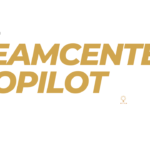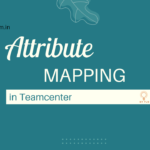In the realm of Product Lifecycle Management (PLM) software, Teamcenter stands as a stalwart, aiding organizations in managing their product data efficiently. Among its myriad features, one crucial aspect is Item Revision. Let’s delve into what Item Revision entails and why it holds paramount importance in the product development process.
Table of Contents
What is Item Revision?
In simple terms, Item Revision refers to the evolution or versioning of an item within the Teamcenter database. Items can range from CAD models, drawings, documents, to any other data pertinent to the product being developed. As changes occur throughout the product lifecycle, these items undergo revisions, capturing modifications, updates, or corrections.
Key Components of Item Revision
1 Revision Number or Identifier
Each revision of an item is assigned a unique identifier, usually in the form of an alphanumeric string (e.g., A, B, C; 01, 02, 03). This identifier helps in tracking the chronological order of revisions.
2 Revision Description
A brief description accompanying each revision helps users understand the changes made, providing context for the modifications.
3 Revision Lifecycle State
Items can exist in various states throughout their lifecycle, such as “In Work,” “Released,” “Obsolete,” etc. These states signify the current stage of the item within the product development process.
4 Relationships and Dependencies
Items in Teamcenter are often interconnected, with dependencies on each other. Revisions must manage these relationships effectively, ensuring consistency and accuracy across the product data.
Importance of Item Revision in Teamcenter
1 Version Control
By maintaining a history of revisions, Teamcenter enables version control, ensuring that users can track changes made to items over time. This capability is invaluable in collaborative environments where multiple stakeholders contribute to product development.
2 Traceability
The ability to trace the evolution of an item from its initial conception to its current state is critical for compliance, auditing, and troubleshooting purposes. Item Revision facilitates this traceability by recording every change made to the item.
3 Change Management
Effective change management is essential in product development to incorporate feedback, address issues, and implement improvements. Item Revision in Teamcenter streamlines the change management process by providing a structured framework for proposing, reviewing, and implementing changes.
4 Regulatory Compliance
In industries subject to regulatory standards and certifications, maintaining accurate records of item revisions is imperative for compliance. Teamcenter’s robust revision management capabilities help organizations adhere to regulatory requirements effortlessly.
Conclusion
In the dynamic landscape of product development, managing item-revisions effectively is indispensable for ensuring product quality, efficiency, and compliance. Teamcenter’s comprehensive suite of tools for Item-Revision empowers organizations to navigate the complexities of the product lifecycle with ease, facilitating collaboration, innovation, and ultimately, the delivery of superior products to market. Embracing the principles of Item-Revision in Teamcenter can undoubtedly drive success in today’s competitive business environment.
Read More Articles
Exploring the Power of Tiles in Teamcenter’s Active Workspace Client
Understanding the Contrast: Volume vs. Database in TC
Exploring TC: The Central Hub for Product Lifecycle Management
Understanding Item Revision in TC: A Comprehensive Guide
Unlocking Efficiency and Precision: Understanding Workflow Designer in TC
Understanding PLM (Product Lifecycle Management): A Comprehensive Guide
Demystifying BMIDE in TC: Empowering Effective PLM Solutions
Understanding Organizations in TC: Building Efficient Work Structures
Demystifying Datasets in TC: A Comprehensive Guide
A Step-by-Step Guide to Installing TC Software
Revealed Pseudofolders in Siemens TC: Simplifying Data Management for Engineers
Unlocking TC’s Potential: A Guide to Creating Custom Properties
Understanding PLM (Product Lifecycle Management): A Comprehensive Guide
Demystifying BMIDE in TC: Empowering Effective PLM Solutions
Understanding Organizations in TC: Building Efficient Work Structures
Demystifying Datasets in TC: A Comprehensive Guide







